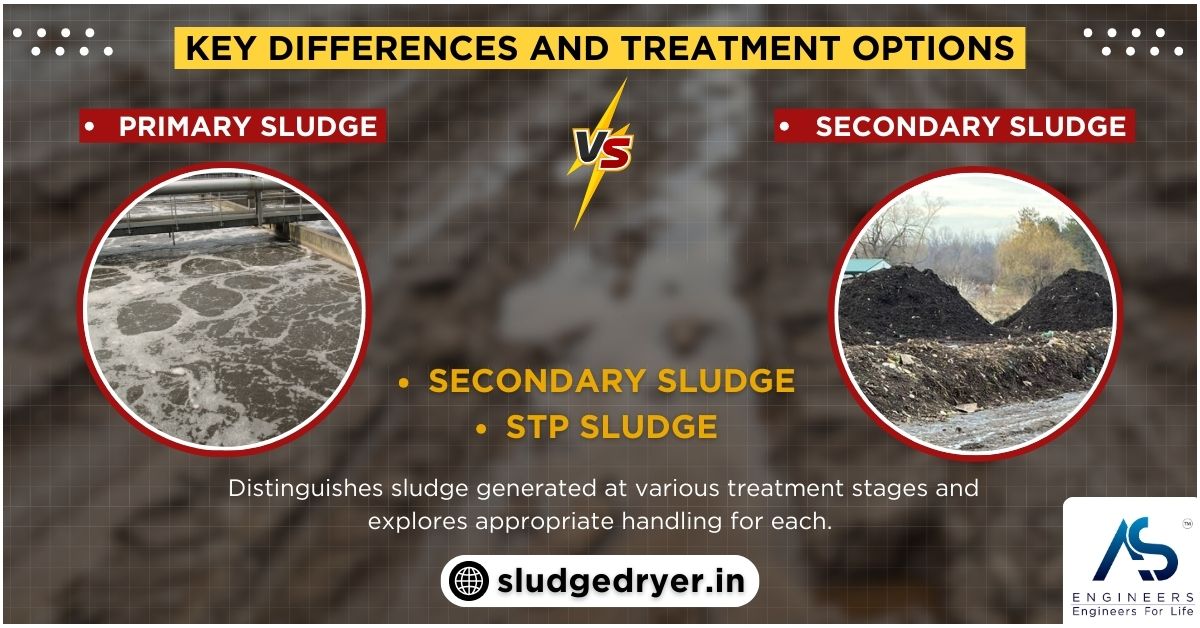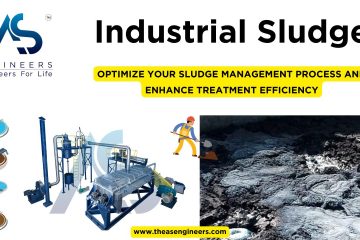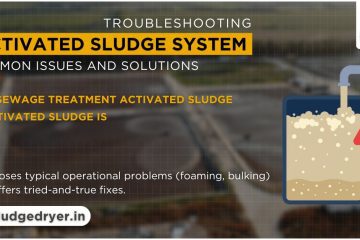Have you ever wondered what happens to the wastewater that disappears down your kitchen sink or toilet? Every day, municipal and industrial facilities process massive volumes of water, separating various forms of sludge in the course of treatment. The most critical stages of this process yield two distinct byproducts: primary sludge and secondary sludge. Understanding these two forms of sludge, as well as how to handle and treat them, can make a huge difference in your operational efficiency, regulatory compliance, and environmental footprint. In this in-depth guide, you’ll discover the key differences between primary sludge and secondary sludge, plus the best strategies for managing and disposing of each.
Table of contents
- Understanding Sludge Generation
- What Is Primary Sludge?
- What Is Secondary Sludge?
- Primary vs. Secondary Sludge: Key Differences
- STP Sludge: Integrating Both Types
- Anaerobic Digestion Explained
- Aerobic Digestion & Composting
- Dewatering and Thickening
- Chemical Conditioning for Better Results
- Real-World Example: Municipal Scale
- Real-World Example: Industrial Scale
- Costs, Regulations, and Compliance
- FAQ: Quick Answers
- Myth-Busting Common Sludge Misconceptions
- Conclusion
Understanding Sludge Generation
Wastewater treatment plants aim to produce clean water that can be safely released into the environment or reused in industrial and municipal processes. Whether you’re operating a small facility or a massive municipal site, treatment processes inevitably generate sludge—semi-solid waste that contains organic matter, suspended solids, nutrients, and possibly chemicals or heavy metals.
Stages of Wastewater Treatment
- Preliminary Treatment
- Removes large objects through screening and grit removal.
- Primary Treatment
- Slows the flow and allows heavier solids to settle out, creating primary sludge.
- Secondary Treatment
- Uses biological processes (aerobic or anaerobic) to break down organic matter, generating secondary sludge.
- Tertiary Treatment (If Applicable)
- Further refines effluent water quality through additional filtration, disinfection, or nutrient removal.
Sludge typically arises in the second and third steps, although a tertiary stage can also produce specialized residuals. The primary focus here is on primary sludge and secondary sludge, which differ not only in composition but also in their ideal treatment options.
What Is Primary Sludge?
Primary sludge is the material that settles out in the primary clarifier or sedimentation tank. It primarily consists of:
- Settleable Solids: Heavier particles like sand, silt, or inorganic debris.
- Organic Material: Fats, oils, and grease (FOG) and food residue.
- High Moisture Content: Although this sludge is dense, it still contains a large amount of water.
Because primary sludge is collected in an early stage, it often contains higher concentrations of raw organic material. This material is more putrescible—it can quickly turn septic if not handled properly. Effective handling requires stabilizing the sludge to reduce odor and pathogen content.
Characteristics of Primary Sludge
- High in organic loading (food wastes, oils, grease).
- Typically has a thicker consistency than most secondary sludge.
- Often slightly easier to dewater compared to secondary sludge because solids are larger and more settleable.
What Is Secondary Sludge?
After you remove large debris and settle out heavier solids in the primary stage, secondary or biological treatment steps in. This is where microorganisms consume dissolved and suspended organic matter. The byproduct of these biological reactions is secondary sludge—often termed waste activated sludge (WAS) in activated sludge systems or humus sludge in trickling filters.
Characteristics of Secondary Sludge
- Composed mostly of microbial biomass (bacteria, protozoa) that have fed on organic matter.
- Generally more difficult to dewater than primary sludge due to its finer particle size and higher bound water.
- Often has a lower organic load per gram of sludge but higher volatile solids compared to primary sludge.
Secondary sludge can have a gelatinous texture, making it more challenging to thicken and dewater. In many treatment setups, secondary sludge gets combined with primary sludge for co-treatment or separate handling, depending on facility objectives.
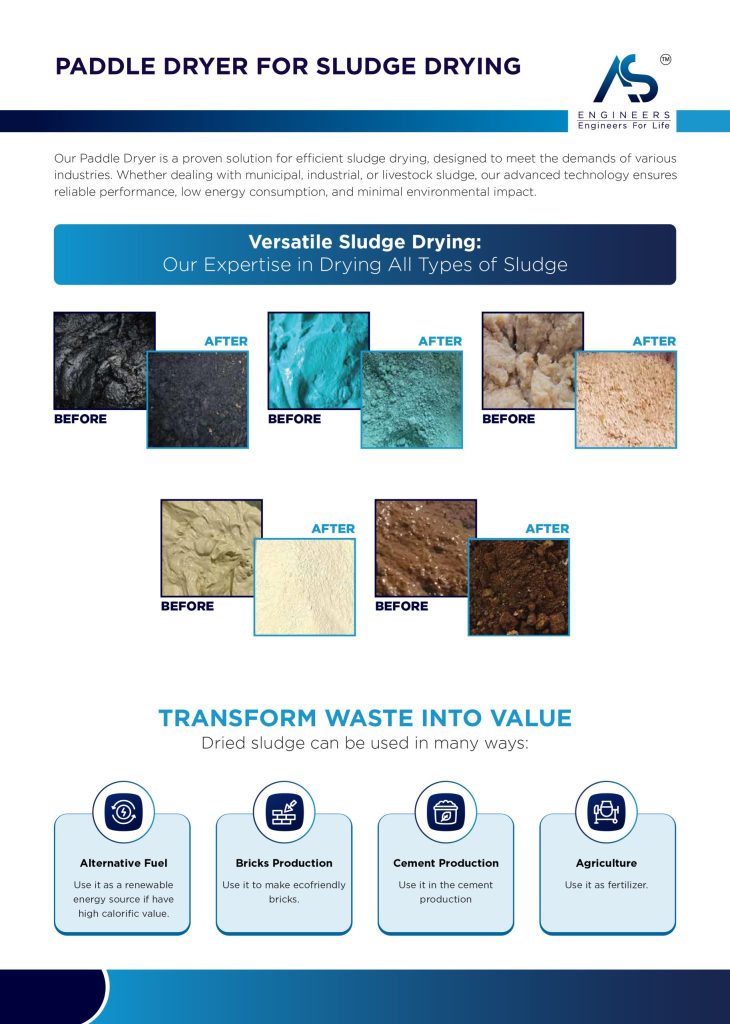
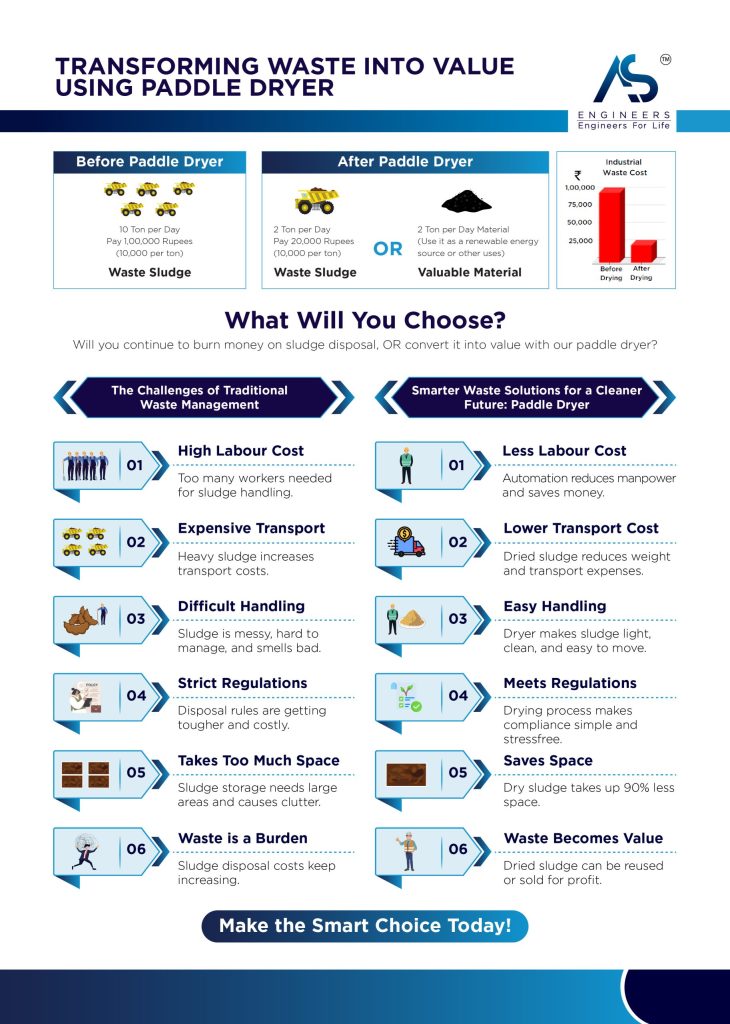
Primary vs. Secondary Sludge: Key Differences
It’s not enough just to name them differently; primary sludge and secondary sludge differ in crucial ways:
- Origin
- Primary Sludge: Formed by gravitational settling of heavier solids.
- Secondary Sludge: Generated from biological processes that convert soluble organic matter into microbial mass.
- Composition
- Primary: Typically rich in fats, oils, grease, and coarse solids.
- Secondary: Dominated by microorganisms and cellular biomass.
- Dewatering Properties
- Primary: Often easier to dewater because of larger, heavier solids.
- Secondary: Contains finer particles, more bound water, thus more difficult to dewater.
- Organic Content
- Primary: Can have a higher overall organic load, but in a more readily settleable form.
- Secondary: Lower organic load per volume, but a significant volatile fraction due to living or dead microorganisms.
- Treatment Requirements
- Primary: Often thickened, then digested (anaerobic or aerobic).
- Secondary: Typically conditioned, sometimes thickened, and then digested or stabilized.
Understanding these distinctions helps you design treatment processes and select the best stabilization or disposal path. In many facilities, the synergy between both sludge types—especially when combined—maximizes biogas production (in anaerobic digestion) and overall resource recovery.
STP Sludge: Integrating Both Types
The term STP sludge refers to “Sewage Treatment Plant” sludge, which generally encompasses the entire spectrum of waste produced at municipal treatment plants. STP sludge can be:
- Pure Primary Sludge: If only the primary clarifier’s output is included.
- Pure Secondary Sludge: If only the waste activated sludge or secondary byproduct is considered.
- Mixed Sludge: A blend of primary and secondary sludge, often favored because it balances characteristics for digestion and dewatering.
In real-world scenarios, many STPs combine primary sludge and secondary sludge in a single digestion system. Mixing can improve the carbon-to-nitrogen ratio, speed up stabilization, and create a more homogenous feed for further processes like dewatering or incineration.
Core Treatment Methods
Once you have captured and separated primary sludge or secondary sludge, you must treat it to reduce volume, destroy pathogens, and often recover resources like biogas or fertilizer. Common methods include:
- Thickening: Concentrating sludge by removing water through gravity or mechanical means.
- Digestion: Using microorganisms under anaerobic or aerobic conditions to stabilize sludge.
- Dewatering: Further separating water from stabilized sludge. Technologies like belt presses, centrifuges, and plate-and-frame presses are popular.
- Thermal Processes: Drying or incinerating to reduce volume drastically.
- Land Application: Using stabilized biosolids as soil amendments, provided pathogens and metals meet regulatory standards.
Each approach has pros and cons. For example, anaerobic digestion can produce biogas for energy, while composting can yield a soil amendment. Incineration eliminates the potential for land application but demands high capital and operational costs.
Anaerobic Digestion Explained
Anaerobic digestion stands out as one of the most widely adopted methods for handling both primary sludge and secondary sludge. In this process, various microorganisms break down organic matter in oxygen-free conditions, producing:
- Biogas: Mainly methane (CH4) and carbon dioxide (CO2). Methane can be captured and used to power boilers or generators.
- Digestate: A partially stabilized slurry that may still require further dewatering or disposal.
Stages of Anaerobic Digestion
- Hydrolysis
- Complex organic molecules (proteins, carbohydrates, fats) break down into simpler substances.
- Acidogenesis
- Bacteria convert these simpler compounds into volatile fatty acids, ammonia, and hydrogen sulfide.
- Acetogenesis
- Acetogenic bacteria turn these products into acetic acid, hydrogen, and carbon dioxide.
- Methanogenesis
- Methanogens produce methane from acetic acid or hydrogen and carbon dioxide.
Anaerobic digestion often performs best when you combine primary sludge (rich in carbohydrates and fats) with secondary sludge (high microbial mass). The synergy of both can improve biogas yields and accelerate digestion.
Aerobic Digestion & Composting
Not every facility has the infrastructure for large, sealed anaerobic digesters. Sometimes, aerobic digestion is more practical. This method uses oxygen-loving bacteria to break down organic matter.
- Energy Requirement: Aerobic digestion often needs continuous aeration, making it more energy-intensive.
- End Product: Aerobically digested sludge can serve as a stable biosolid for land application if it meets pathogen reduction standards.
Composting is a specialized aerobic process that blends sludge with carbon-rich bulking agents like wood chips or yard waste. Over weeks or months, heat from microbial activity sanitizes the sludge, resulting in a soil-like product. Composting:
- Reduces odor and pathogens.
- Produces a valuable soil amendment for landscaping or agriculture.
- Requires careful management of temperature, moisture, and oxygen levels.
Dewatering and Thickening
Before you finalize any disposal or reuse plan, you need to reduce the volume of sludge. Thickening and dewatering remove excess water and yield a more manageable solid product.
Thickening
- Gravity Thickeners: Large basins where sludge settles, concentrating solids at the bottom.
- Dissolved Air Flotation (DAF): Introduces microbubbles to float solids to the surface.
- Mechanical Thickeners: Equipment like rotary drum thickeners or gravity belt thickeners.
Dewatering
- Belt Filter Presses: Continuous operation that uses pressure and gravity to remove water.
- Centrifuges: High-speed rotation separates water from solids.
- Plate-and-Frame Presses: Batch operation that applies pressure to filter out water and produce a dry cake.
In general, primary sludge tends to be more amenable to dewatering due to its composition. Secondary sludge often requires more careful polymer dosing or conditioning to achieve similar dryness levels.
Chemical Conditioning for Better Results
Sludge conditioning aims to improve the efficiency of thickening or dewatering processes. Chemical additions can:
- Adjust pH to optimize flocculation.
- Break Emulsions that trap water within the sludge matrix.
- Foster Finer Particle Aggregation for easier removal of water.
Common agents include:
- Polymers (cationic, anionic, or nonionic).
- Ferric Chloride or Alum to precipitate certain contaminants.
- Lime to raise pH and reduce odors and pathogens.
Choosing the correct chemical cocktail depends on whether you are handling primary sludge, secondary sludge, or a mixture. Lab-scale tests, known as jar tests, often determine the optimal dosage.
Real-World Example: Municipal Scale
Scenario: A mid-sized municipality treats 20 million gallons per day of wastewater.
- Primary Stage: The plant operates two primary clarifiers, which yield several tons of primary sludge daily.
- Secondary Stage: Uses an activated sludge process, producing an equal or slightly higher volume of secondary sludge.
- Combined Digestion: Operators blend both sludge streams and feed them to an anaerobic digester. The result is biogas used for heating the digester itself, plus partial electricity generation.
- Dewatering: The digested sludge is further dewatered by centrifuges. Final cake dryness ranges from 18% to 25%, depending on polymer dosage.
- Land Application: The stabilized and dewatered product (often referred to as biosolids) goes to agricultural land during specific seasons, abiding by local regulations on nutrient application and pathogen levels.
Key Takeaways:
- Combining primary and secondary sludge can improve biogas yields.
- Municipal setups often rely on well-tuned digestion for cost savings.
- The final product can serve agricultural purposes if it meets safety standards.
Real-World Example: Industrial Scale
Scenario: A food processing factory produces high-strength wastewater with elevated organic content.
- Primary Treatment: Screens and settling tanks remove large food particles. This results in a thick, high-BOD primary sludge.
- Secondary Treatment: An aerobic activated sludge system breaks down dissolved organics, generating secondary sludge.
- Separate Digestion: The factory discovered that their primary sludge was exceptionally high in fats and sugars. They opted for separate anaerobic digestion of primary sludge to produce more methane, which powers on-site boilers.
- Secondary Sludge Management: They stabilized secondary sludge in an aerobic digester, then combined the digested streams for final dewatering in a belt press.
- End Use: The final dewatered cake is sent for composting, where it is blended with agricultural waste to create a marketable soil amendment.
Key Takeaways:
- Industries often optimize each sludge type differently to maximize resource recovery.
- High-fat primary sludge can yield significant biogas.
- Composting can provide an additional revenue stream, transforming waste into a valuable product.
Costs, Regulations, and Compliance
Cost and compliance play pivotal roles in deciding how to treat primary sludge, secondary sludge, or STP sludge. From capital expenditures for digesters and dewatering machines to operating costs for chemicals and energy, facilities must weigh multiple factors.
Cost Factors
- Equipment: Large digesters or advanced dewatering systems come with substantial capital costs.
- Energy Usage: Aeration for aerobic digestion or mechanical thickening can be power-intensive.
- Chemical Needs: Polymers and pH adjusters add to operating expenses.
- Maintenance: Regular upkeep prolongs equipment life but requires skilled labor.
Regulatory Drivers
- Pathogen Reduction: Laws often require Class A or Class B biosolids standards for land application.
- Heavy Metal Limits: Certain sludges, especially from industrial sources, may carry metals that must stay below regulated thresholds.
- Vector Attraction: Treatment must reduce the sludge’s attractiveness to insects and rodents.
- Odor Control: Facilities need to minimize odor complaints from nearby communities.
Facilities must stay updated with evolving regulations. Environmental agencies continuously refine guidelines on nutrient management, microplastics, and emerging contaminants, making a flexible sludge treatment approach essential.
FAQ: Quick Answers
1. What makes primary sludge different from secondary sludge?
Primary sludge settles out in the earliest treatment stages and contains heavier organic solids, fats, and oils. Secondary sludge forms when microorganisms break down dissolved waste in biological treatment. It’s mainly microbial biomass, tends to be finer, and can be harder to dewater.
2. Can I treat primary and secondary sludge together?
Yes. Many facilities blend both to optimize digestion and minimize overall treatment complexity. Combined sludge often yields better biogas production in anaerobic digesters, although you may need different chemical additions to handle varied compositions before thickening or dewatering.
3. Which is more challenging to dewater, primary sludge or secondary sludge?
Secondary sludge is generally harder to dewater due to its fine particles and the bound water in microbial cells. Primary sludge contains larger, denser solids and typically dewaters more easily, requiring less polymer. However, site-specific conditions can alter these general trends.
4. What happens to sludge after digestion or stabilization?
After digestion or stabilization, facilities usually thicken or dewater the sludge to reduce its volume. The resulting “cake” can be land-applied, composted, incinerated, or sent to a landfill, depending on local regulations, sludge quality, and cost considerations.
5. Is it safe to use digested sludge on farmland?
Properly treated and tested sludge (often referred to as biosolids) can be safe for land application. Regulations ensure it meets pathogen reduction and heavy metal limits. Facilities must monitor and document these parameters to maintain compliance and protect public health.
Myth-Busting Common Sludge Misconceptions
Information about primary sludge, secondary sludge, and general STP sludge often gets clouded by outdated or inaccurate claims. Let’s clear up a few:
- Myth: “All sludge is the same.”
- Fact: Primary sludge and secondary sludge differ significantly in composition, consistency, and treatment needs.
- Myth: “Land application always causes odor issues.”
- Fact: Stabilized or digested biosolids often produce minimal odor if handled correctly, especially when properly incorporated into soil.
- Myth: “You only need anaerobic digestion.”
- Fact: Aerobic digestion, composting, and chemical stabilization all have valid roles depending on local regulations, costs, and facility goals.
- Myth: “Secondary sludge is useless biomass.”
- Fact: Secondary sludge can be a valuable resource for biogas production or as a component in fertilizer if stabilized and tested properly.
- Myth: “Polymer dosing is too expensive for sludge treatment.”
- Fact: While polymers add cost, they often reduce hauling and disposal fees by increasing cake dryness, making the overall process more economical.
Step-by-Step Sludge Optimization Checklist
Optimizing your sludge treatment processes often requires a systematic approach. Here’s a quick-start checklist:
- Analyze Sludge Composition
- Conduct lab tests for total solids, volatile solids, and nutrient content.
- Identify potential contaminants like heavy metals or toxic compounds.
- Determine Treatment Goals
- Is your main aim to produce biogas?
- Do you want to lower hauling costs?
- Are you planning to reuse biosolids as fertilizer?
- Select or Refine Digestion Method
- Anaerobic: Go for biogas production if you have enough volume.
- Aerobic: If your facility can handle higher energy use.
- Composting: Ideal if land application is a priority.
- Enhance Dewatering Efficiency
- Try different polymers or flocculants.
- Explore mechanical vs. gravity thickening.
- Check that the equipment is sized properly for your sludge throughput.
- Monitor Operational Data
- Track pH, temperature, and retention time if you use digesters.
- Collect dryness data on the final cake.
- Note changes in polymer dosage or feed rates.
- Plan Final Disposal or Reuse
- Secure land application sites if you aim for agricultural use.
- Evaluate incineration or landfill if land use is restricted or not cost-effective.
- Maintain compliance records to pass audits or inspections.
- Continuous Improvement
- Encourage operator training and involvement in troubleshooting.
- Maintain equipment to avoid downtime and unexpected costs.
- Keep updated on emerging technologies like advanced digestion or thermal hydrolysis.
Implementing these steps not only refines your approach to primary sludge and secondary sludge but can also lower operating costs, improve compliance, and build community trust.
Conclusion
Primary sludge and secondary sludge may arise at different stages of wastewater treatment, but each demands careful handling to minimize environmental impact and maximize resources. By understanding their unique qualities—particularly the heavier, more easily settled nature of primary sludge and the more biologically active composition of secondary sludge—you can craft a robust strategy that lowers disposal costs, meets regulatory standards, and even recovers value through biogas or beneficial reuse. Ready to optimize your sludge processes? Start by combining proven methods like anaerobic digestion and effective dewatering, then integrate modern data tracking and continuous operator training. By doing so, you’ll not only keep your facility running smoothly but also transform primary sludge and secondary sludge into an opportunity rather than a burden.
Share your thoughts below on how you manage sludge in your treatment system. Subscribe for more insights into efficient wastewater solutions, and check out related guides for advanced sludge processing tips.

